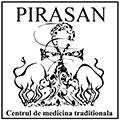Biliary dyskinesia defines the disorder of the bile-evacuating mechanism, a disorder due to certain motility dysfunctions of the gall bladder, of the common bile duct or of Oddi sphincter.
The Function of the Gall Bladder in the Body
The gall bladder is a small sized organ, situated under the liver. It communicates with the liver through the hepatic duct. It stores and concentrates the bile, which is a green hepatic secretion used in the digestive process. When we eat our foods, the gall bladder releases the bile through the common bile duct into the duodenum (the first segment of the small intestine).
TypesThese biliary dysfunctions cause major disorders in the activity of the body and they may lead to liver diseases (fatty liver, hepatomegaly, hepatic cirrhosis) and pancreatic diseases (pancreatitis, diabetes), pathologic disorders of the intestinal microflora, gastric diseases (gastritis, ulcer, and gastro-esophageal reflux).
Hyperkinetic biliary dyskinesia is defined by an increased biliary activity, a decreased size of the gall bladder, a quickened intestinal transit, pains and diarrhea. Hypokinetic biliary dyskinesia, also known as “lazy bile”, is defined by pains or discomfort in the right hypochondrium, a pressure in the respective area and a bitter taste after meals or after physical effort, bilious vomiting, pruritus.
Causes
The main factors to blame in a disorder of the biliary activity are stress or other mental disorders and a chaotic and inadequate food regime, characterized by frequent alimentary excesses and excessive consumption of fats, fried foods, sausages, fat or minced meat, eggs, coffee, chocolate, alcohol or other foods that take a long time to digest.
Biliary dyskinesia may also be triggered by non-alimentary factors such as: endocrine disorders, gynecological diseases, stress, physical exhaustion, anxious and/or depressive disorders.
Treatment
The treatment of biliary dyskinesia is done by tonifying and relaxing the gall bladder (as is the case) and by regulating the bile secretion of the hepatic tissue. The diet included in the treatment programme will improve the hepatic and biliary activity. After ending the diet, the patient may undertake a more relaxed food regime. Nevertheless, he must have three meals a day and he must not have any snacks whatsoever between these meals.
Thus the doctor eliminates the effects of stress, adjusts the patient’s alimentation, guides him to adopt a healthy food regime and also cures the organs affected indirectly: fatty liver (accumulation of adipose tissue in the hepatic area disturbing the hepatic functions), the dysfunction of the thyroid, the decreased intestinal peristaltic reflex etc. At the same time the balance of the intestinal flora as well as the mucous membrane of the stomach are also restored. Should there also be residues in the gall bladder (mud), the doctor will also perform a biliary drainage in order to eliminate them.

